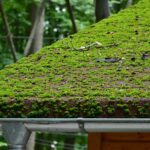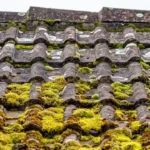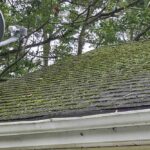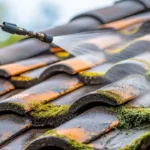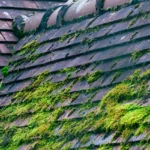For homeowners, maintaining a roof is crucial for the overall health of the home. Here well provide a comprehensive guide for a DIY roof inspection checklist that ensures safety and effective maintenance throughout the year.
Conducting your own roof inspection has many advantages. It not only saves on professional fees but also empowers you to have a hands-on approach. Knowing the fundamental steps of a thorough roof inspection can really make a difference. That being said, understanding what to look for is fundamental to preserving the integrity and longevity of your roof.

Understanding Your Roof: The Basics
Types of Roofing Materials
From asphalt shingles to metal roofing, understanding the type of materials on your roof is the first step in any DIY roof inspection. Each material has its distinct features and common issues. This will guide you on what specific signs of damage to look for.
Structural Elements of a Roof
Learn about the fundamental parts of your roof, such as rafters, trusses, and shingles. Each element plays a critical role in your roof’s health and requires regular attention.
Preparing for Your Inspection
Safety First
Always ensure safety by using a sturdy ladder, wearing non-slip shoes, and having a spotter. Safety procedures are non-negotiable since roof inspections can be hazardous.
Tools and Equipment Needed
Before beginning, gather essential tools like binoculars, a flashlight, a tape measure, and a notepad to document your findings.
Conducting the Inspection
Exterior Inspection
Start by inspecting the roof from ground level using binoculars for a general overview. Identify missing or damaged shingles, sagging areas, and ensure no debris or leaves have accumulated.
Interior Inspection
Crawl into your attic to inspect for any water damage, mold growth, or light leaks which can indicate roof issues. Pay close attention to any musty odors and dark stains.
Documenting Your Findings
Record all observations and capture photographs of damaged areas. Accurate documentation will help when deciding what repairs are necessary or when contacting professionals for further action.
Addressing Common Roof Problems
Identifying Water Damage
Water stains on the ceiling or walls indicate leaks. Use your DIY roof inspection checklist to locate the source and determine the best course of action. Learn how to mitigate water damage promptly to avoid more extensive repairs.
Dealing with Moss and Algae
Learn methods to remove and prevent moss and algae growth, which can degrade roofing materials over time, affecting your roof’s lifespan.
Checking for Shingle Damage
Identify cracked or missing shingles. Understand the immediate steps you need to take to prevent further damage. Get familiar with patching or replacing shingles as part of your DIY approach.
When to Call a Professional
If you notice significant structural damage or require extensive repairs, know when its time to contact a professional roofer. Sometimes, external factors or the complexity of damage necessitate expert intervention.
Maintaining Your Roof Long Term
Routine Maintenance Tips
Regular checks every spring and fall can extend your roof’s life. Essential maintenance includes cleaning gutters and ensuring proper attic ventilation.
For more tips on maintaining your roof, consider visiting Houselogic.
Seasonal Roof Care
Adapt your inspection schedule and approach based on seasonal changes. Winters require specific care to handle snow loads, while summers necessitate protection from intense sun exposure.
Learn more about seasonal impact on roofs from this insightful article: wind damage to roof.

FAQ Section
What are the common signs of roof damage?
Common signs include missing shingles, leaks inside the home, dark spots on ceilings, and the presence of mold or algae on shingles.
How often should I perform a DIY roof inspection?
A thorough examination is recommended twice a year, preferably in spring and fall, to address weather-driven wear and tear.
Are all repairs feasible with a DIY approach?
No, complex issues like structural damage require professional assessment. Its vital to recognize limitations in DIY projects.
Finally, having a comprehensive understanding of your roofs condition empowers you as a homeowner. Regular inspections using a DIY roof inspection checklist can prevent major damages, save money, and ensure the safety and comfort of your home over the years.
This article contains affiliate links. We may earn a commission at no extra cost to you.




